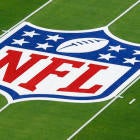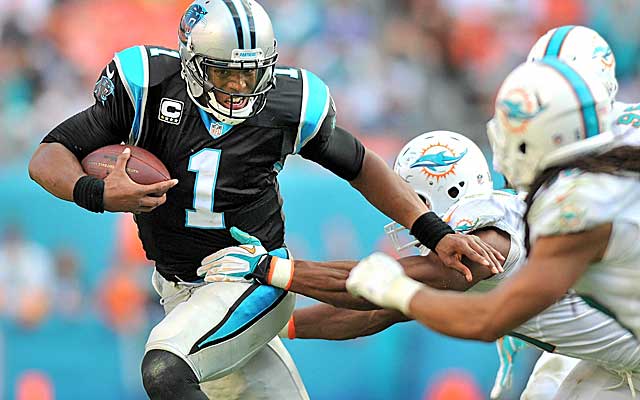
More NFL offseason: League minicamp dates | Latest news, notes
The devil is in the details with NFL contracts since they aren't fully guaranteed like MLB and NBA contracts. Colin Kaepernick's recent six-year contract extension worth a maximum of $126 million is a perfect illustration of this principle.
On the surface it appeared as if the San Francisco 49ers made a huge financial commitment to their QB because of the overall value of the deal and the $61 million in guarantees. But Kaepernick's contract doesn't provide him the same level of security as comparable quarterback deals. Only $12,973,766 is fully guaranteed at signing. Jay Cutler, Tony Romo and Matt Ryan have $38 million, $40 million and $42 million fully guaranteed at signing in their contracts, which is essentially triple Kaepernick's amount.
Kaepernick's deal helped shed light on how NFL contracts are generally structured because of the scrutiny it received. Average salary and total compensation are misleading because of the lack of security with NFL contracts. The most important metrics are compensation in the first three years of a multiyear deal and the amount of money fully guaranteed at signing or will become fully guaranteed early in the contract.
There are four basic NFL contract structures with slight variances within each general structure.
Signing bonus
The only guaranteed money with this structure is a signing bonus, which is prorated or spread out evenly over the life of a contract for a maximum of five years. A big signing bonus can keep salary cap numbers low in the early years of the deal while making it difficult for a team to cut a player because signing bonus proration accelerates onto a team's current salary cap upon release. As salaries have escalated, teams have moved away from the pure signing-bonus model. Teams that still use this structure usually give their players less overall guarantees than comparable players on other teams with different structures. Since it is usually cap prohibitive to release a player that gets a significant signing bonus with this model, some teams are willing to include roster bonuses due in the first couple of days of the second contract year (i.e.; third day of the league year).
Signing bonus and salary guarantees
Guaranteed money with this structure consists of a signing bonus and salary guarantees. The base salary in the first contract year is usually fully guaranteed (injury, salary cap and skill guarantees) at signing. Roster bonuses in the first contract year due a few days after signing are fairly common. Even though these roster bonuses technically aren't guaranteed, they are considered as a part of the guaranteed money. Salary guarantees in subsequent contract years are mainly base salary. Some teams will fully guarantee the second-year base salary at signing.
The trend is for base salaries after the first contract year to be conditionally guaranteed. They are guaranteed for injury only initially but fully guaranteed if a player is on the team's roster on a specified date in each specific contract year. This date will vary from team to team but is normally within the first few days of the current league year (i.e.; 2015 base salary becomes guaranteed on third day of the 2015 league year). Early roster bonuses (first day of the league year) in subsequent contract years containing guarantees aren't as common as the base salary guarantees but operate in a similar manner.
A majority of salary guarantees have offset language. An offset clause reduces the guaranteed money a team owes a player when he is released by the amount of his new deal with another team. Without an offset, the player receives his salary from the team that released him as well as the full salary from his new contract with another club.
Signing bonus and option bonus
The player receives a signing bonus and an option bonus with this structure. An option bonus is essentially an additional signing bonus that's usually paid in the second or third year of a contract to exercise later years in the deal. Since an option bonus is given the same treatment on the salary cap as a signing bonus, it is also prorated or evenly spread out over the life of a contract for a maximum of five years.
Option bonuses aren't quite as secure as signing bonuses. Typically, an option non-exercise fee for the same amount as the option bonus is included in the contract. It's usually payable the day after the option exercise period expires if the player hasn't been released. Fully guaranteed base salaries at signing that void or reduce after an option has been exercised are sometimes a part of the deal to minimize or eliminate the risk of the player getting released before the option exercise period ends.
Pay as you go
Pay as you go is a relatively new structure teams are starting to embrace. A player's cash and salary cap numbers are the same in each contract year because he is receiving salary guarantees instead of a signing bonus under this model. The first contract year usually consists of a fully guaranteed base salary and a roster bonus due a few days after signing. The second year in the most lucrative pay-as-you-go contracts has a fully guaranteed base and a conditionally guaranteed early roster bonus similar to the conditional salary guarantees in the signing bonus/salary guarantee structure.
There may also be conditional guarantees in the third year. Deals with this structure have higher cap numbers, particularly in the early years, because of the absence of a signing bonus. Since there isn't any signing bonus proration, teams have more cap flexibility. A team won't have any dead money (a cap charge for a player no longer on the roster) if a player is released during the latter years of the deal once the guarantees have expired, provided that his contract hasn't been restructured.
What it all means
Teams are requiring per-game active roster bonuses in contracts with more frequency under each of the basic contract structures. The primary benefit of the roster bonuses is they provide teams some financial and cap relief with injuries. The per-game amount is only payable if a player is on the 46-man active roster for that particular game. For example, Kaepernick has $2 million roster bonuses ($125,000 per game) in most years of his deal. If Kaepernick suffered a season-ending injury in San Francisco's eighth game during the 2015 season, he would only earn $1 million of his $2 million 2015 roster bonus.
It's important for an agent to know a team's structural conventions during a contract negotiation. Insisting that a team deviate from their structural preferences is usually an exercise in futility. Teams are extremely reluctant to establish new contractual precedents but are more likely to make an exception with highly sought after free agents, superstars and quarterbacks.
Here's a look at the preferred structure of the most lucrative contracts on each NFL team.
Arizona Cardinals: Calais Campbell, Larry Fitzgerald and Daryl Washington's signing/option bonus deals were signed before Steve Keim became general manager. Jared Veldheer, the team's biggest free-agent signing during Keim's tenure, got a signing bonus and base-salary guarantees that may be the beginning of a shift away from the signing/option bonus structure that could apply to Patrick Peterson.
Atlanta Falcons: Sam Baker, Matt Ryan and Roddy White have signing and option bonuses with some form of base-salary guarantees. Ryan's second- and third-year base salaries (2014 and '15) became fully guaranteed on the third day of the league year (March 13). In all likelihood, Julio Jones' next deal will have this structure.
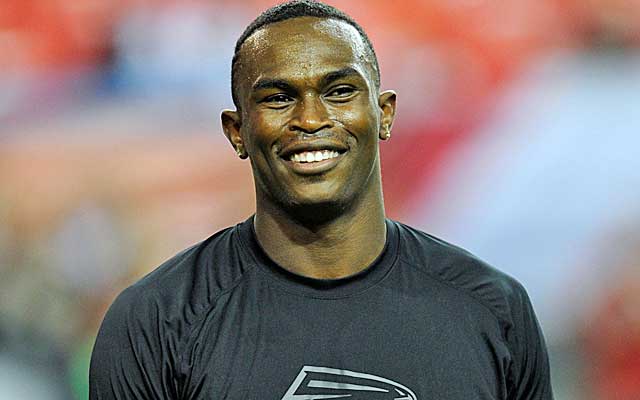
Baltimore Ravens: Baltimore's most lucrative contracts are structured with a signing bonus and option bonus. Haloti Ngata's contract includes a $25 million signing bonus and a $10 million option bonus. Terrell Suggs' 2009 deal had a $10.1 million signing bonus and $23 million option bonus. There are $15 million and $7 million signing and option bonuses in Ray Rice's contract. Joe Flacco's deal contains a $29 million signing bonus and two option bonuses ($15 million in 2014 and $7 million in 2015). Double option bonuses were also used with Ray Lewis in 2009 and Ed Reed in 2006.
Buffalo Bills: The Bills used the signing/option bonus model with Ryan Fitzpatrick, Stevie Johnson and Mario Williams. The six-year, $96 million contract (with an additional $4 million in incentives) Buffalo gave Williams, which made him the NFL's highest-paid defensive player, contained $50 million in guarantees; $24.9 million of the $50 million was fully guaranteed at signing.
Carolina Panthers: Marty Hurney preferred the signing/option bonus model while he was general manager, except in 2011 when he gave Jon Beason, Charles Johnson and DeAngelo Williams big signing bonuses with modest base-salary guarantees. Even though second-year general manger Dave Gettleman released Steve Smith before his $3 million option bonus was due, he's still making $3 million from the Panthers this year because of his $3 million 2014 base-salary guarantee without an offset. Since Gettleman doesn't have a track record with lucrative deals as general manager, it remains to be seen how Cam Newton's big contract will be structured.
Chicago Bears: The Bears have shown a lot of flexibility when structuring contracts. Jay Cutler's seven-year, $126.7 million contract has a pay-as-you-go structure. The Bears converted $5 million of his $22.5 million 2014 base salary into signing bonus during March in order to sign Jared Allen to a pay-as-you-go deal. Cutler has $2.5 million in per-game roster bonuses in the later years of his deal because of his injury history. Julius Peppers had a modest signing bonus, first-year roster bonus due shortly after signing and conditional guarantees in subsequent years. Matt Forte's contract is structured in a similar manner as Peppers' deal. Jermon Bushrod, Lamarr Houston and Brandon Marshall got signing bonuses with fully guaranteed first-year base salaries and conditionally guaranteed second-year base salaries.
Cleveland Browns: The signing bonus/salary guarantee model was used with Joe Haden and Joe Thomas, the two highest-paid players on the team. Both deals contain base-salary injury guarantees after the first contract year that become fully guaranteed on the third day after the start of the waiver period in that specific year. Alex Mack's deal has a pay-as-you-go structure because the Browns matched the offer sheet he signed with the Jacksonville Jaguars as a transition player.
Cincinnati Bengals: The Bengals give signing bonuses with an unguaranteed early roster bonus in the second contract year. The second-year roster bonuses are typically for the fifth day of the league year. The roster bonuses are supposed to be substitutes for additional contact guarantees.
Dallas Cowboys: The Cowboys favor fairly significant signing bonuses with a fully guaranteed first-year base salary and conditional base salary guarantees in subsequent years. Tony Romo has the most player-friendly contract structure on the team. The base salaries in his first two years are fully guaranteed without offsets. DeMarcus Ware also didn't have offsets. Romo has the NFL's highest 2015 salary cap number at $27.773 million. Since his contract will likely be restructured for cap room in the offseason, Romo's roster spot shouldn't be in jeopardy until 2017 at the earliest.
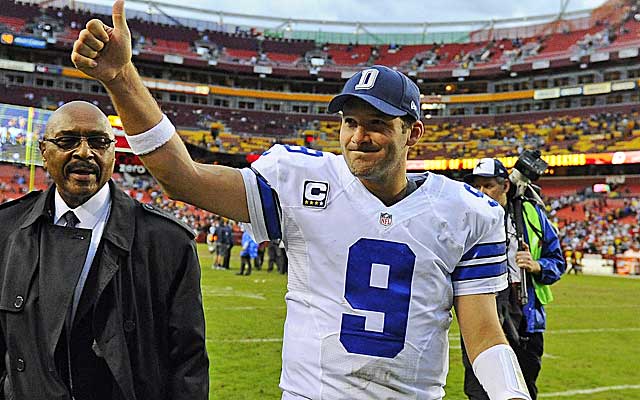
Denver Broncos: The Broncos primarily structure their most lucrative contracts with modest signing bonuses, a first-year roster bonus a few days after signing and salary guarantees in the early years of the deals. Most of the guarantees after the first year of a contract are conditional guarantees that allow the Broncos to exit these deals without adverse cap consequences. Aqib Talib's six-year, $57 million contract containing a $5 million signing is a prime example. Since only $11.5 million of his $25.5 million in guarantees is fully guaranteed at signing (all in 2014) the Broncos can release Talib before the third day of the 2015 league year when his 2015 base salary becomes fully guaranteed if he is a disappointment or the off-the-field issues that plagued him in Tampa Bay reoccur. There would be $4 million in dead money (a charge for a player no longer on the roster) but the Broncos would gain $3 million in cap space despite paying Talib $12 million for just one season in Denver.
Detroit Lions: Calvin Johnson's seven-year, $113.45 million contract extension used the signing/option bonus structure with base-salary guarantees out of necessity. It was the most advantageous structure to the Lions because of cap constraints. Matthew Stafford's three-year, $53 million contract extension has a $27.5 million signing bonus, fully guaranteed base salaries in the first two years and a conditional base-salary guarantee in the third year. Johnson and Stafford's guarantees don't have offsets. The Lions have been negotiating a contract extension with Ndamukong Suh which would lower his $22,412,500 cap number. If an agreement is reached, it will be interesting to see how his deal is structured.
Green Bay Packers: Deals typically contain a signing bonus and early roster bonus (third to fifth day of the league year) in the second contract year. First-year base salaries are rarely guaranteed. Green Bay made structural concessions with Aaron Rodgers by giving him roster-bonus guarantees in his second and third contract years. He is the only player on the Packers with a veteran deal that has guarantees after the first contract year. Per-game roster bonuses are a requirement with Green Bay. Clay Matthews and Rodgers have $500,000 and $600,000 of per-game roster bonuses in their contract extension years.
Houston Texans: Signing bonuses and fully guaranteed base salaries in the first two years are how most of Houston's lucrative contracts (Duane Brown, Arian Foster, Johnathan Joseph, Matt Schaub) are structured. The Texans deviated from their usual contract structure with Brian Cushing's deal. It contains signing and option bonuses. Hefty per-game roster bonuses were required with Cushing ($1.25 million each in 2014-2019) and Schaub ($1 million in each of the past three years) because of injury concerns. Foster also has per-game roster bonuses.
Indianapolis Colts: The Colts mostly structure deals with signing bonuses and base-salary guarantees. Whether the second-year base salary is fully guaranteed at signing depends on the player's contract leverage. Gosder Cherilus' contract triggered an obscure salary cap rule, the 50 Percent Down Rule, because his second-year base salary ($1 million in 2014) was less than half his first year base salary ($5.5 million in 2013). The $4.5 million difference between the two salaries is being treated as signing bonus and prorated over his five-year deal ($900,000 annually).
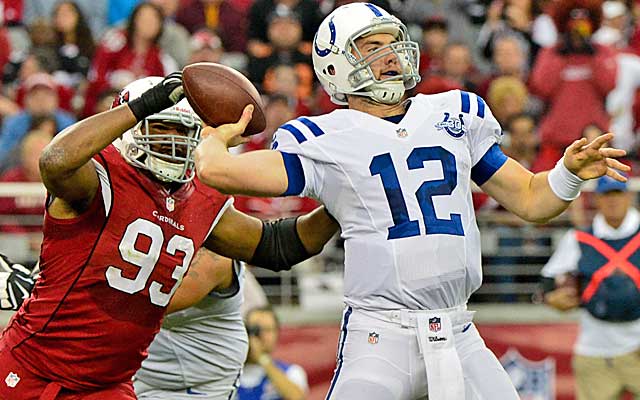
Jacksonville Jaguars: The Jaguars wisely adopted the pay-as-you-go structure this year with the almost $52 million of salary cap room they had when free agency began. The fifth day of the league year roster bonuses in the second contract year are primarily guaranteed for injury. Zane Beadles' $2 million roster bonus for the fifth day of the 2015 league year is guaranteed for skill and injury at signing. Chris Clemons and Red Bryant, both in their 30s, have $500,000 of per-game roster bonuses annually.
Kansas City Chiefs: Dwayne Bowe is the only high-priced signing since Andy Reid and John Dorsey became head coach and general manager. Bowe's five-year, $56 million deal contains a signing bonus ($15 million), a fully guaranteed first-year base salary and player-friendly base-salary guarantees in the second and third years. Expect this kind of structure with any new deals signed by Justin Houston or Alex Smith.
Miami Dolphins: The Dolphins were able to make a splash during free agency in 2013 using modest signing bonuses and salary guarantees because of low first-year cap numbers in their deals. The base salaries in the first two years of their deals are fully guaranteed at signing. The second-year cap number typically is more than twice as much as in the first year. Mike Wallace, who signed a five-year, $60 million deal, has the most extreme jump. His cap number went from $3.25 million in 2013 to $17.25 million in 2014. Any third-year base salary guarantees are conditional but can be player friendly. For example, $3 million of Dannell Ellerbe's 2015 base salary became fully guaranteed on the fifth day of the 2014 league year (March 15).
Minnesota Vikings: The Vikings have been consistent with their contracts for several years. The same signing bonus/base-salary guarantee structure in Jared Allen's 2008 deal that made him the NFL's highest-paid defensive player is still being used. Even Adrian Peterson has conditional guarantees after the first contract year.
New England Patriots: A variety of contract structures are used by the Patriots. Rob Gronkowski and Jerod Mayo's deals have signing and option bonuses while Logan Mankins has a signing bonus and base-salary guarantees. About $500,000 to $750,000 of annual per-game roster bonuses have become the norm in the past couple of years. Players with an injury history (Sebastian Vollmer and Vince Wilfork) or character concerns (Brandon Browner) have larger per-game roster bonuses. Tom Brady has consistently gotten more favorable contract treatment than the rest of the team. He doesn't have per-game roster bonuses. His conditional guarantees aren't year-to-year propositions and haven't contained offsets. The final three years (2015-17) of the five-year, $57 million deal Brady signed in 2013 where he took a steep hometown discount become fully guaranteed at the end of the 2014 regular season.

New Orleans Saints: The signing bonus/salary guarantee model was used with Drew Brees, Jairus Byrd, Marques Colston, Ben Grubbs and Jahri Evans. Brees received an NFL-record $37 million signing bonus in the five-year, $100 million contract he signed two years ago. Byrd's signing was surprising because the Saints had limited cap space when free agency opened. The first-year cap number (2014) in his five-year, $52.5 million deal (with an additional $1.5 million in salary escalators) is only $3.5 million.
New York Giants: Eli Manning's contract is the signing/option structure. Most of the other players (William Beatty, Victor Cruz, Antrel Rolle) at the top of the Giants' pay scale have signing bonuses with fully guaranteed base salaries in the first two years.
New York Jets: General manager John Idzik has been structuring contracts in a more team-friendly manner since he was hired in 2013. Outside of Eric Decker's five-year, $36.25 million deal (with $15 million fully guaranteed), the Jets have primarily made low-budget signings with Idzik. Decker's contract with a signing bonus and fully guaranteed base salaries in the first two years could be the blueprint for future big signings under Idzik.
Oakland Raiders: General manager Reggie McKenzie went the pay-as-go-you-go route with most of the deals he signed in free agency after spending the previous two years cleaning up the salary cap mess he inherited. The Raiders didn't get true pay-as-you-go treatment with the five-year, $30 million contract Austin Howard signed. Since his $7 million roster bonus was only one day after he signed his contract, it's being classified as a signing bonus under the cap and prorated for five years ($1.4 million annually on the cap). At least three days must elapse between a contract's signing and a roster bonus for it to avoid being treated as signing bonus.
Philadelphia Eagles: The Eagles typically employ the signing bonus/base salary guarantee structure. The first two years of base salary are fully guaranteed, except with LeSean McCoy whose third-year base salary (2014) is fully guaranteed. It would be a surprise if Philadelphia did another deal where the guarantees didn't have offsets because Nnamdi Asomugha made $4 million from the team last year after he was released thanks to a 2013 salary guarantee without offsets.
Pittsburgh Steelers: With the exception of Ben Roethlisberger, the only guaranteed money in Pittsburgh deals is a signing bonus. A majority of the deals contain a roster bonus due the fifth day of the league year in the second year. The overall guarantees in Pittsburgh contracts are usually less than comparable deals on other teams. The six-year contract extension Roethlisberger signed in 2008 contains $4 million injury guarantees in 2009 and 2010, which didn't have the ability to become full guarantees at a specified later date.
St. Louis Rams: The signing bonus/salary guarantee model is used most frequently, although Chris Long has a-pay-as-you-go deal. Signing bonuses are typically kept under $5 million with fully guaranteed base salaries in the first two years. Some deals have early roster bonuses (usually before the fifth day of the league year) that can become fully guaranteed. The Rams are comfortable with guarantees that don't have offsets. Fortunately for the Rams, Cortland Finnegan's $3 million 2014 roster bonus guaranteed for skill and injury when he was released has an offset. The Rams will get the $3 million back from the deal he signed with Dolphins.
San Diego Chargers: Besides Eric Weddle's deal, San Diego's biggest contracts use the signing/option bonus structure (Donald Butler, Antonio Gates, Philip Rivers). Weddle has a signing bonus and fully guaranteed base salaries in the first two years.
San Francisco 49ers: The basic components of Kaepernick's extension are consistent with most of the other lucrative contracts negotiated by the 49ers in recent years. However, NaVorro Bowman and Patrick Willis' deals have option bonuses. The guarantees after the first contract year are injury guarantees that typically become fully guaranteed on April 1 of each specific contract year. Vernon Davis and Frank Gore's injury guarantees don't contain a mechanism where they can become fully guaranteed. Annual per-game roster bonuses ranging from $400,000 to $2 million are standard with the 49ers. Kaepernick's per-game roster bonuses are tied with Gore for the highest on the team. The salary de-escalator concept in Kaepernick's deal came from Ahmad Brooks' contract. Anthony Davis also has de-escalators based on meeting certain weight requirements and playing time.
Seattle Seahawks: Seahawks contracts typically use the signing bonus/base salary guarantee model. Base-salary guarantees after the first contract year become fully guaranteed usually five days after the start of the waiver period in each specific year. The second contract year was fully guaranteed at signing with deals before 2013 (Chris Clemons, Zach Miller, Sidney Rice, Max Unger). This may be necessary with Russell Wilson when he gets a new deal, presumably in 2015. Per-game roster bonuses are also starting to become more prevalent in Seattle's contracts. Marshawn Lynch has $500,000 and $2 million of per-game roster bonuses in 2014 and '15. Michael Bennett also has $1 million and $1.5 million of per game roster bonuses in the final two years of the four-year contract he signed this offseason.
Tampa Bay Buccaneers: The Buccaneers adopted the pay-as-you-go structure during Mark Dominik's tenure as general manager. This approach has allowed new head coach Lovie Smith and GM Jason Licht to remake Tampa Bay's roster this offseason because parting ways with Darrelle Revis, Davin Joseph and Donald Penn created $29,416,667 of cap room with only $666,666 in dead money. Guarantees without offsets are possible. Dashon Goldson, Michael Johnson and Carl Nicks don't have offsets while Vincent Jackson has them.
Tennessee Titans: The Titans prefer deals containing a signing bonus with a fully guaranteed first-year base salary and conditionally guaranteed second-year base salary. Michael Griffin, Jason McCourty, Andy Levitre and Kamerion Wimbley (2012 deal) got signing bonuses in the neighborhood of $10 million. The second-year base salaries are guaranteed for injury at signing but become fully guaranteed between the fifth day after the start of the waiver period and the fifth day of the league year in that specific contract year.
Washington Redskins: Big contracts have been a rarity recently because of the $36 million two-year salary cap penalty assessed right before the start of free agency in 2012 for violating unwritten spending rules relating to front-loading contracts and releasing players to avoid signing bonus acceleration during the uncapped 2010 season. Pierre Garcon's five-year, $42.5 million contract signed in 2012 is probably the best indication of how a long-term deal for franchise player Brian Orakpo would be structured. His contract is the signing bonus/base salary guarantee model with $250,000 in annual per-game roster bonuses. Garcon's second- and third-year base salaries are injury guaranteed at signing but become fully guaranteed in each specific contract year. Per-game roster bonuses are in most Redskins contracts.
Joel Corry is a former sports agent who helped found Premier Sports & Entertainment, a sports management firm that represents professional athletes and coaches. Before his tenure at Premier, Joel worked for Management Plus Enterprises, which represented Shaquille O'Neal, Hakeem Olajuwon and Ronnie Lott.
You can follow him on Twitter: @corryjoel
You can email him at jccorry@gmail.com














